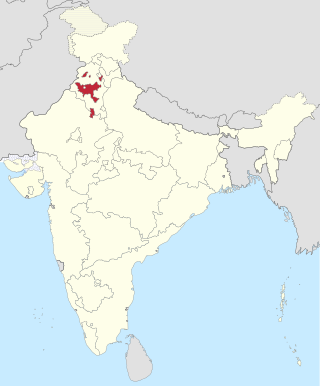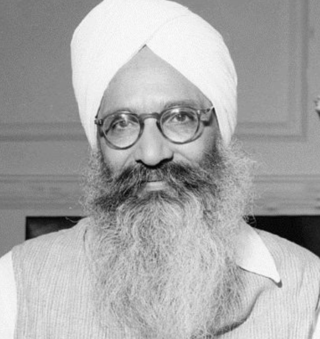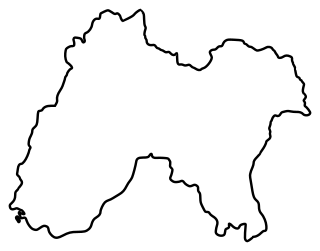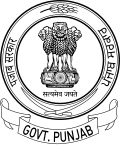
Panth Rattan Shiri Gurcharan Singh Tohra was a president of Shiromani Gurdwara Parbandhak Committee (SGPC), a Sikh body in charge of controlling Gurdwara. He died of a heart attack in New Delhi on 1 April 2004 at the age of 79. He remained the head of the SGPC for a record 27 years, and was one of the most influential and controversial Sikh leaders of the 20th century.

Giani Zail Singh was an Indian politician from Punjab who served as the seventh president of India from 1982 to 1987. He was the first Sikh to become president.

The Punjabi Suba movement was a long-drawn political agitation, launched by Punjabi speaking people demanding the creation of autonomous Punjabi Suba, or Punjabi-speaking state, in the post-independence Indian state of East Punjab. The movement is defined as the forerunner of Khalistan movement.

The Patiala and East Punjab States Union (PEPSU) was a state of India, uniting eight princely states between 1948 and 1956. The capital and principal city was Patiala. The state covered an area of 26,208 km². Shimla, Kasauli, Kandaghat and Chail also became part of the PEPSU.
Kairon, is a small historical Indian village of the historical places like Gurudwara Jhar Sahib. this village in the district of Tarn-Taran, located in the north-west of Punjab. The village is home to a majority of Dhillon Jatt Sikhs.

Partap Singh Kairon was the Chief Minister of the Punjab province, and is widely acknowledged as the architect of post-Independence Punjab Province. Moreover, he was an Indian independence movement leader. He was jailed twice by the British Empire, once for five years for organizing protests against British rule. His political influence and views are still considered to dominate politics in Punjab.
Jagmeet Singh Brar is an Indian politician, lawyer, writer and poet who belonged to the Shiromani Akali Dal. He represents the Lokhit Abhiyan political party.
Politics in reorganised present-day Punjab is dominated by mainly three parties – Indian National Congress, Aam Aadmi Party and Shiromani Akali Dal (Badal). Since 1967, Chief Minister of Punjab has been predominantly from Jat Sikh community despite its 21 percent state population. Exceptions are Giani Zail Singh, the Chief Minister of Punjab from 17 March 1972 to 30 April 1977 belonging to Ramgarhia community that has population of 6 percent and is a part of significant OBC community having population of 31.3 percent in the state and Charanjit Singh Channi who held the position for 111 days from 20 September 2021 to 16 March 2022 and was from Scheduled Caste(Dalit) who have 32 percent population in the state. Other prominent party is Bahujan Samaj Party especially in Doaba region founded by Kanshi Ram of Rupnagar district. In 1992 BSP won 9 seats Vidhan Sabha elections. Also BSP won 3 lok sabha seats from Punjab in 1996 general elections and only Garhshanker seat in 1997 Vidhan Sabha elections. Communist parties too have some influence in the Malwa area. In the 2014 general elections, the first-time contesting Aam Aadmi Party got 4 out of 13 seats in Punjab by winning 34 of the total 117 assembly segments, coming second in 7, third in 73 and fourth in the rest 3 segments. The support for the Aam Aadmi Party increased later in Punjab. The current Government was elected in the 2022 Punjab Assembly elections and the AAP won 92 out of 117 Assembly seats with Bhagwant Mann as the Chief Minister. The Congress flows down to get only 18 seats.

Gurnam Singh was an Indian politician and the Chief Minister of Punjab from 8 March 1967 to 25 November 1967, and again between 17 February 1969 to 27 March 1970. He was the first Shiromani Akali Dal Chief minister of Punjab. His ministry fell due to defection of Lachhman Singh Gill, who became the next Chief Minister with the support of the Indian National Congress. He died in an air crash in Delhi on 31 May 1973.

Sardar Gian Singh Rarewala was an Indian politician and the first Chief Minister of the former Indian state of Patiala and East Punjab States Union.
The list of members of political families of Punjab, India

Parkash Singh Badal was an Indian politician who served as the 8th Chief Minister of Punjab from 1970 to 1971, from 1977 to 1980, from 1997 to 2002, and from 2007 to 2017. He was also Leader of the Opposition in the Punjab Legislative Assembly from 1972 to 1977, 1980 to 1983 and from 2002 to 2007 and the 11th Union Minister of Agriculture and Farmers' Welfare in the Morarji Desai ministry from 1977 to 1977. He was the patron of Shiromani Akali Dal (SAD), a Sikh-centered regional political party, and the president of the party from 1995 to 2008, when he was replaced by his son Sukhbir Singh Badal. As the patron of SAD he exercised a strong influence on the Shiromani Gurdwara Parbandhak Committee and Delhi Sikh Gurdwara Management Committee. The Government of India awarded him the second-highest civilian award, the Padma Vibhushan, in 2015.

Elections to the Punjab Provincial Assembly were held in January 1946 as part of the 1946 Indian provincial elections.
The Interim East Punjab Assembly was a unicameral governing and law making body of the newly formed Indian state of East Punjab.

The 1952 Punjab Legislative Assembly election were the First Vidhan Sabha elections of the state when the Indian National Congress emerged as the largest party with 96 seats in the 126-seat legislature in the election. The Shiromani Akali Dal became the official opposition, holding 13 seats.

The 1957 Punjab Legislative Assembly election was the Second Vidhan Sabha election of the state when the Indian National Congress emerged as the largest party with 120 seats in the 154-seat legislature in the election. The Bharatiya Jana Sangh became the official opposition, holding 9 seats.
The 1962 Punjab Legislative Assembly election was the Third Vidhan Sabha election of the state when the Indian National Congress emerged as the largest party with 90 seats in the 154-seat legislature in the election. The Shiromani Akali Dal became the official opposition, holding 16 seats. From 5 July 1966 to 1 November 1966, Assembly was under suspension.
The 1967 Punjab Legislative Assembly election was the Fourth Vidhan Sabha election of the state. This was the first hung assembly. Indian National Congress emerged as the largest party with 48 seats in the 104-seat legislature in the election. The Akali Dal - Sant Fateh Singh became the second, holding 24 seats. On 28 August 1968, Assembly dissolved prematurely and president rule was imposed.
The 1969 Punjab Legislative Assembly election was the fifth Vidhan Sabha election of the state. This was the second hung assembly. Shiromani Akali Dal emerged as the largest party with 43 seats in the 104-seat legislature in the election. The Indian National Congress became the second, holding 38 seats. On 13 June 1971, Assembly dissolved prematurely and president rule was imposed.


































